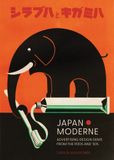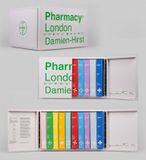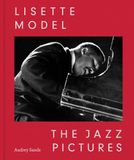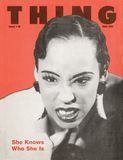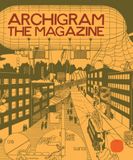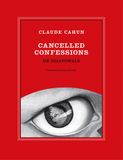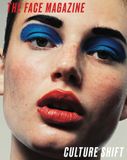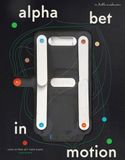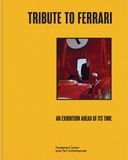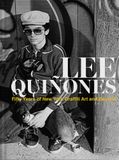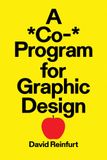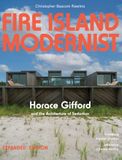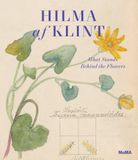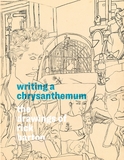| |||||||||||||||||||||||||
ARTBOOK BLOGEventsStore NewsMuseum Stores of the MonthNew Title ReleasesStaff PicksImage GalleryBooks in the MediaExcerpts & EssaysArtbook InterviewsEx LibrisAt First SightThe Artbook | D.A.P. 2025 Gift GuidesArtbook Featured Image ArchiveArtbook D.A.P. Events ArchiveDATE 1/1/2026 Happy New Year!DATE 12/25/2025 A revelation of our nation’s essential, quirky visual character in ‘Lee Friedlander: Christmas’DATE 12/16/2025 The acute gaze of Gabriele MünterDATE 12/11/2025 192 Books presents Raymond Foye and Peter Gizzi on The Song Cave's new edition of John Wiener’s 'Behind the State Capitol: Or Cincinnati Pike'DATE 12/9/2025 The atmospheric, rarely-seen watercolors of Winslow HomerDATE 12/8/2025 Pure winter glamour in ‘It’s Snowing!’DATE 12/3/2025 Flamboyant poses and melodramatic airs in 'Cecil Beaton's Fashionable World'DATE 11/30/2025 Artbook at Hauser & Wirth Los Angeles Bookstore presents Kelli Anderson and Claire L. Evans launching 'Alphabet in Motion'DATE 11/27/2025 Indigenous presence in 'Wendy Red Star: Her Dreams Are True'DATE 11/24/2025 Holiday Gift Guide 2025: Artful Crowd-PleasersDATE 11/22/2025 From 'Bottle Rocket' to 'The Phoenician Scheme' — the archives of Wes AndersonDATE 11/20/2025 The testimonial art of Reverend Joyce McDonaldDATE 11/18/2025 A profound document of art, love and friendship in ‘Paul Thek and Peter Hujar: Stay away from nothing’ | STAFF PICKS | FROM THE SHELVES
| ||||||||||||||||||||||||
in stock $50.00 Free Shipping UPS GROUND IN THE CONTINENTAL U.S. |
 Bean Spasms
Bean Spasms
Published by Granary Books.
By Ted Berrigan & Ron Padgett. Illustrations by Joe Brainard.
Out of print for more than 40 years, Bean Spasms is a facsimille of a classic New York School collaboration between poets Ted Berrigan and Ron Padgett, with further writings, illustrations and cover by artist and writer Joe Brainard
PUBLISHER
Granary Books
BOOK FORMAT
Paperback, 7.5 x 10 in. / 212 pgs / 26 bw.
PUBLISHING STATUS
Pub Date 7/31/2012
Out of print
DISTRIBUTION
D.A.P. Exclusive
Catalog: FALL 2012 p. 55
PRODUCT DETAILS
ISBN 9781887123808 TRADE
List Price: $39.95 CAD $53.95 GBP £35.00
AVAILABILITY
Not available
STATUS: Out of print | 00/00/00 For assistance locating a copy, please see our list of recommended out of print specialists |
 Hippie Chic
Hippie Chic
Published by MFA Publications, Museum of Fine Arts, Boston.
Text by Lauren D. Whitley.
A fresh look at hippie couture with a focus on the top fashion houses influenced by street culture
PUBLISHER
MFA Publications, Museum of Fine Arts, Boston
BOOK FORMAT
Hardcover, 8 x 10.5 in. / 152 pgs / 145 color.
PUBLISHING STATUS
Pub Date 7/31/2013
Out of print
DISTRIBUTION
D.A.P. Exclusive
Catalog: FALL 2013 p. 28
PRODUCT DETAILS
ISBN 9780878467952 TRADE
List Price: $35.00 CAD $47.50 GBP £24.95
AVAILABILITY
Not available
STATUS: Out of print | 00/00/00 For assistance locating a copy, please see our list of recommended out of print specialists |
 Jan Ságl: Plastic People Primitives Group
Jan Ságl: Plastic People Primitives Group
Dancing on the Double Ice
Published by Kant.
Edited and with text by Jan Ságl. Preface by Lenka Bucilová. Interviews by Petr Volf.
In mid-1960s Czechoslovakia, prior to the Soviet invasion, the hippie ethos reigned supreme. Photographer Jan Ságl (born 1942), now well known for his photographs of Paris, was on hand to document the communes, bands and performances of the time. He photographed the scenes around the artist Zorka Ságlová, the art theorist Vera Jirousová and bands such as the Primitives Group, the Plastic People of the Universe, DG 307, Aktual and others. In the spring of 1976, while Ságl and his wife were holidaying at their weekend cottage, the police cracked down on the circle around these bands, searching homes, interrogating "suspects" and making arrests. Ságl returned home just in time to hide his photographs, which would otherwise have led to many further arrests. They remained hidden, and were eventually thought lost, until 2012, when Ságl unearthed the images--compiling them in this astonishing, massive panorama of an otherwise undocumented Czech counterculture.
PUBLISHER
Kant
BOOK FORMAT
Hardcover, 9 x 9 in. / 540 pgs / 553 bw.
PUBLISHING STATUS
Pub Date 9/30/2014
Active
DISTRIBUTION
D.A.P. Exclusive
Catalog: SPRING 2014 p. 198
PRODUCT DETAILS
ISBN 9788074370915 TRADE
List Price: $55.00 CAD $72.50
AVAILABILITY
In stock
in stock $55.00 Free Shipping UPS GROUND IN THE CONTINENTAL U.S. |
 Dorothy Iannone: You Who Read Me With Passion Now Must Forever Be My Friends
Dorothy Iannone: You Who Read Me With Passion Now Must Forever Be My Friends
Published by Siglio.
Edited by Lisa Pearson. Text by Trinie Dalton.
Iannone’s image–text works celebrate a joyful sexuality and spirituality
PUBLISHER
Siglio
BOOK FORMAT
Paperback, 7.25 x 9 in. / 320 pgs / 95 color / 210 bw.
PUBLISHING STATUS
Pub Date 11/30/2014
Active
DISTRIBUTION
D.A.P. Exclusive
Catalog: FALL 2014 p. 22
PRODUCT DETAILS
ISBN 9781938221071 TRADE
List Price: $45.00 CAD $60.00 GBP £40.00
AVAILABILITY
In stock
in stock $45.00 Free Shipping UPS GROUND IN THE CONTINENTAL U.S. |
 There Was Always a Place to Crash
There Was Always a Place to Crash
Al Kaplan's Provincetown 1961–1966
Published by Letter16 Press.
Introduction by Brett Sokol.
There Was Always a Place to Crash: Al Kaplan’s Provincetown 1961–1966 features previously unseen photographs of Provincetown, Massachusetts’ early 1960s bohemian milieu, from future Andy Warhol Factory film star Rene Ricard to the libertine scene unfolding inside gay rights pioneer Prescott Townsend’s legendary treehouse, where countless "washashores" (including filmmaker John Waters) would stay upon first hitting Provincetown. The end result is an intimate look at a key countercultural period in American history—one whose often overlooked nuances still resonate today in both the art world and throughout the gay community. All of the volume’s images have been carefully transferred from the late Miami photographer Al Kaplan’s original 35mm black-and-white negatives. With an introduction by award-winning Miami arts journalist Brett Sokol, There Was Always a Place to Crash is one of the first records of this pre-Stonewall era in Provincetown.
PUBLISHER
Letter16 Press
BOOK FORMAT
Hardcover, 11.25 x 10.25 in. / 72 pgs / 79 bw.
PUBLISHING STATUS
Pub Date 2/23/2016
Out of stock indefinitely
DISTRIBUTION
D.A.P. Exclusive
Catalog: SPRING 2016 p. 110
PRODUCT DETAILS
ISBN 9780989381116 TRADE
List Price: $29.95 CAD $39.95 GBP £27.00
AVAILABILITY
Not available
STATUS: Out of stock indefinitely. |
 John Cohen: Here and Gone, Bob Dylan, Woody Guthrie & the 1960s
John Cohen: Here and Gone, Bob Dylan, Woody Guthrie & the 1960s
Published by Steidl.
John Cohen’s portraiture of two titans of American music at opposite ends of their careers
PUBLISHER
Steidl
BOOK FORMAT
Hardcover, 9.5 x 9.5 in. / 144 pgs / illustrated throughout.
PUBLISHING STATUS
Pub Date 10/31/2014
Active
DISTRIBUTION
D.A.P. Exclusive
Catalog: FALL 2014 p. 16
PRODUCT DETAILS
ISBN 9783869306049 TRADE
List Price: $48.00 CAD $65.00
AVAILABILITY
In stock
in stock $48.00 Free Shipping UPS GROUND IN THE CONTINENTAL U.S. |
 Victor Moscoso: Psychedelic Drawings 1967-1982
Victor Moscoso: Psychedelic Drawings 1967-1982
Published by Andrew Edlin Gallery.
Edited by Dan Nadel. Text by Norman Hathaway, Gail Moscoso.
This is the catalogue for the first retrospective of drawings by Victor Moscoso (born 1936), one of the preeminent graphic artists of the 20th century, who is widely renowned for his 1960s psychedelic posters and comics. Moscoso began designing posters for rock shows in San Francisco in 1966, and quickly developed a signature style in which opposite hues of the same intensity sit next to each other to create a visual "vibration" effect. This book is the first to present the full range of Moscoso's drawings for posters and comics, including original renderings for his renowned cover of Zap Comix 4 (1969), the Hocus Pocus story, posters for The Doors and The Who, and other seminal published editions. These works reveal Moscoso's dedication to expert draftsmanship in the service of graphics, as well as his graceful approach to drawing everything from dinosaurs to spaceships to humans.
PUBLISHER
Andrew Edlin Gallery
BOOK FORMAT
Paperback, 9.5 x 10.5 in. / 96 pgs / 80 color.
PUBLISHING STATUS
Pub Date 4/28/2015
Out of stock indefinitely
DISTRIBUTION
D.A.P. Exclusive
Catalog: FALL 2015 p. 164
PRODUCT DETAILS
ISBN 9780977878383 TRADE
List Price: $35.00 CAD $47.50 GBP £30.00
AVAILABILITY
Not available
STATUS: Out of stock indefinitely. |
|
the source for books on art & culture
CUSTOMER SERVICE
orders@artbook.com
212 627 1999 ext 202
M-F 10-6 EST
Ingram Customer Care
800-937-8200 option 3
orders@dapinc.com
NEW YORK
Showroom by Appointment Only
75 Broad Street, Suite 630
New York NY 10004
Tel 212 627 1999
LOS ANGELES
Showroom by Appointment Only
818 S. Broadway, Suite 700
Los Angeles, CA 90014
Tel. 323 969 8985
ARTBOOK LLC
D.A.P. | Distributed Art Publishers, Inc.
All site content Copyright C 2000-2025 by Distributed Art Publishers, Inc. and the respective publishers, authors, artists. For reproduction permissions, contact the copyright holders.
The D.A.P. Catalog
www.artbook.com













